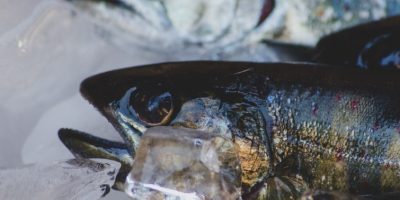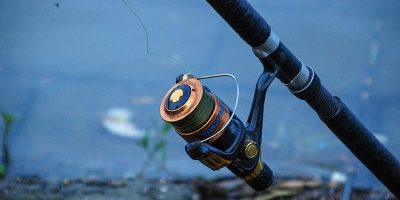When most people think about California, they think about Hollywood and the beaches. This may be the case for many people on holiday here, but it is a trout fishing paradise for fishermen. Beyond the towns, there are many beautiful lakes, streams, and rivers full of fish. You need the best trout fishing lakes in California to enjoy the experience.
Fishing in California is pretty easy, and for a non-resident, you just need to buy a license, and you’re ready to start fishing. Licenses are fairly inexpensive and accessible to numerous vendors in the state.
Sunny California may be home to some giant cities and theme parks, but hidden in this state, there are some great opportunities to catch giant fish. Here are some of the best places to catch the best trout in California.
Best Trout Fishing Lakes In California
What are the best trout fishing lakes in California? Here’s what you should know.
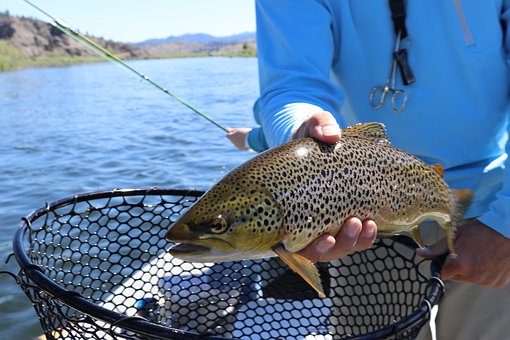
1. Lake Almanor
Found near the Feather River’s headwaters in Northern California, Lake Almanor is one of the state’s most difficult fishing for trout. This lake is home to a monster trout, and anglers will regularly catch browns that weigh between 4 and 9 pounds and a rainbow that averages between 3 and 6.
Found at 4,500 feet in a mountain valley in the shadows of Lassen Peak, Almanor is a beautiful alpine lake that offers a great view while fishing. It’s a great change from the foothills’ normal state waters, surrounded by rolling hills with thick brush and oak.
Compared to some other places on this list, Almanor is sometimes considered to be catching fish. It’s not a spot you’re going to catch a bite of trout to eat, but rather a destination to target and catch a few giant trout for the patient angler. This is the place to go if you’re hunting for a brown monster or a huge rainbow!
2. Pyramid Lake
Further south, you’ll find a favorite among the California trout fishermen, while theoretically, most of them live in Nevada. Found on California and Nevada’s border, Pyramid Lake occupies nearly 125,000 acres, giving you plenty of space to escape the crowd.
The scenery at Pyramid Lake is wonderful, and fishing is even better. This lake is renowned for its massive cutthroat trout, which averages about 5 pounds, and some have been captured up to 30 pounds. Giant cutthroat is popular here, and the trout needs to weigh more than 15 pounds to be considered large for this lake. Anglers from all over the world are coming here in hopes of capturing one of these monster fish for themselves.
You can fish from the banks and do the right thing, but luck is found by taking a boat to the deeper water where the larger fish prefer to hide. If there’s a giant cutthroat trout on your list, this is one lake you’re going to have to fly to.
3. New Melones Reservoir
Many Californian anglers consider New Melones Reservoir to be the best fishing spot in central California for trout, and maybe they’re right. This reservoir reliably produces large rainbow trout, and some decent browns can also develop.
The average rainbow trout here is about 2 pounds, and the fish that weigh from 5 to 8 pounds are very common. Browns in the range of 8 to 11 pounds are very popular, and more than 13 pounds are often found. There are not many places in the world where the average weight of fish is so good, making this a very common choice for anglers.
Most of the fishermen here have the best fishing performance from the shore, which makes sense as this reservoir is relatively small. Although it may be busy at times, fishing here is worth the hassle, and you may be able to catch your new personal best trout.
4. Los Vaqueros Reservoir
The other famous reservoir, Los Vaqueros Reservoir, lies just west of New Melones Reservoir. This small lake was opened to fishing in 2001, and it soon became recognized as some of the best trout fishing off the coast of the state.
Although some local trout populations differ from year to year, there are still a large number of holdover fish in Los Vaqueros due to its mild temperatures and abundant baitfish. The state stores this reservoir with plenty of rainbows every year, always giving the larger fish something to feed.
Shore fishermen here are doing very well, and they can normally catch their limit in healthy rainbows. The northern part of the lake is best for anglers who want to catch giant browns. If you love big rainbows or hungry browns, this little reservoir can be just what you’re looking for.
5. Crowley Lake
One of California’s crown jewels when it comes to trout fishing, Crowley Lake, is simply a world-class trout fishery. It ranks as the top best water trout time and time again in the state and offers outstanding rainbow, brown and cutthroat trout.
Crowley Lake is the perfect place to go if you’re hunting for a double-digit trout. It’s also one of the most scenic and isolated lakes in the entire state, making it a perfect choice for someone who also wants to escape the crowds and have some water on their own.
Behind bass, panfish, and catfish, trout fishing is the fourth most common fishery in North America. Trout has always fought a strong battle, is plentiful from sea to shining sea, and is very tasty when anglers decide to hold it. Native to most of the Pacific Ocean’s cold water tributaries, the West Coast is one of the best spots for trout of any scale, species, or color.
There are three main species of trout anglers chase, all of which have very similar characteristics. The most popular variations are the Rainbow, Brook, and Brown Trout. There is also a wildcard steelhead, which is known as a rainbow trout that spends time in the ocean or the Great Lakes before returning to freshwater or a smaller tributary to spawn. In doing so, these rainbows are given a silvery tint, hence their name. This habit, most frequently seen in salmon, breeds size and durability in the typically smaller bows, making them living legends among trout anglers.
Best Trout Fishing Lakes In California: Where To Find Your Trout
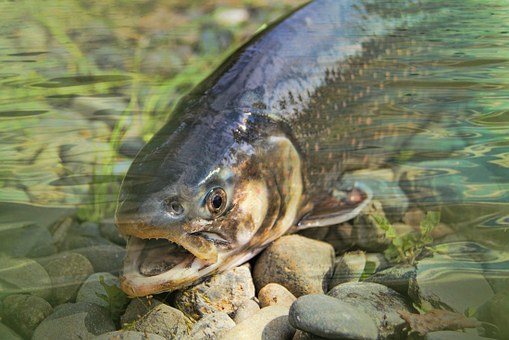
Trout is most often found in cold water and also lives in flowing water as it flows up and down rivers and streams. They also live in lakes (hence the name for another species, The Lake Trout) and are, of course, one of the most widely stocked game species, where they can be found in streams, rivers, and anywhere in between.
As trout is one of the most available food sources for wildlife, you’re likely to find it in the woods, where you’d also find wolves, bobcats, and other wildlife. The farther a river or lake is, the more likely you are to see a trout swimming through their waters. This makes trout fishing some of the most active game-fishing that any angler can do, where it almost crosses a line to hunt or track.
Trout is also abundant deep in some of the great lakes, where it can grow to a large size and fights normally reserved for the ocean. These trout can be found feeding on smaller fish in the lake’s depths or, more generally, during salmon spawning in their beds. Finding out where the trout are stocked is quick and fast, and it’s still a great time to try your hand a week or two after the stock.
Best Trout Fishing Lakes In California: The Essentials Of Trout Fishing
Now that you’re fully educated about the trout species, it’s time to dive into the important things. Here’s what you’re going to need to get started with trout fishing.
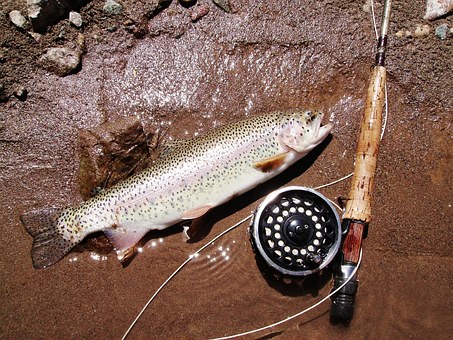
The Fishing License
You’ll most likely need a fishing license of some kind if you’re fishing for trout in the United States or Canada. The type of license you would require depends on the type of fishing you want to do. For example, a saltwater license will not allow you to fish in freshwater lakes and streams, as a freshwater license will not allow you to fish in saltwater. Generally, you’re going to get the easiest catch in freshwater sources – more on this later – so if you’re going to start with a single license, a freshwater license is the best bet.
Notice that various states have different regulations on trout fishing. You will need a trout permit, or if you are in a trout preserve, you may need a trout card or a tag to legally possess and fish for trout.
All of this can sound a little confusing, but getting your hands on the required fishing licenses and permits is quite straightforward. You can buy your fishing license online, usually by searching for the name of your state, followed by a “fishing license.” You will be brought to a website with a lot of information about the types of licenses available and the state’s unique fishing legislation.
Fishing tools
You’re not going to get very far fishing for trout without the right tools. If you’re a total novice, you might want to hire your gear from your nearest fishing shop. This will encourage you to try a hobby one or more times without having to commit to splashing out everything you need.
Your rod is one of the easiest pieces of gear you can find. If you want to buy one, check out the tackle and fishing shops, the sports shops, or, for a wider range, the online stores. If you’re a first-timer in fishing, it’s a smart idea to buy a rod and a reel in one. This was also expected to have a line spooled in place.
The length of the pole is critical when deciding what is best for trout fishing. Usually, a pole with a length of around 6 feet or 7 feet is suitable. This should yield medium action, making it a versatile rod if you want to use it to catch fish other than trout.
Your strategy is all the tools you’re going to need to fish. The word encompasses a lot, but floats, weights, reels, hooks, lines, and sinkers are the most important means of catching trout. Again, you can purchase them online or at your nearest fishing and sports shops.
More Information
As a beginner of trout fishing, use a fishing float to hold your lure out of the bottom of a lake or river. You’re also better off searching for a number of multi-size hooks. Do the same thing with weights, and when it comes to actual fishing, you’ll have a better time to adapt to your gear.
Your bait can be either artificial (known as lures) or live bait. If you use live bait, such as worms, grasshoppers, leeches, and eggs, you’ll need to verify that it’s legal to do so in your state. This knowledge should be readily available online.
Of course, the artificial bait is designed to imitate live bait. Most of these baits have unique scents that draw fish to them in the same way that live bait will do. If you want to purchase trout fishing lures, look for those that are exclusively designed to attract trout.
There are pros and cons for live bait and lure fishing, but bait fishing is preferred for newbies. It is also generally accepted that bait fishing is more successful than alternative methods for catching trout. If you don’t know how to rig, we suggest that you try the Carolina rig or the Texas rig to capture the trout.
Why Do You Need To Try Fly Fishing?
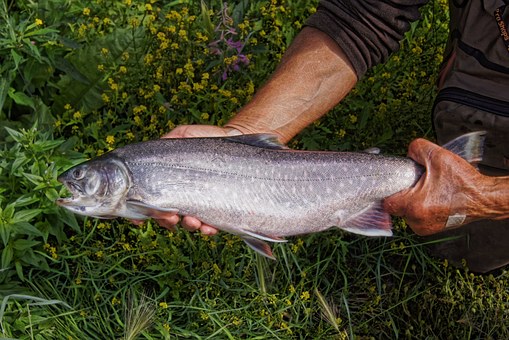
Fishing can be very polarizing. Much of the people either like it, or they don’t. Many who don’t like it say it’s dull, brainless, and smelly. Ok, obviously, they’ve never learned to fly fishing. Fly fishing is a very different ball game. It’s very active, it takes careful knowledge, and it’s far from a sure bet that you’re going to catch something.
If you do catch something, that means you’ve accomplished the perfect mix of flying, flying, and drifting-something you should be proud of. It’s rough, it’s addictive, and it’s going to take you to some amazing locations. Most of all, it’s a reason to get out, to be involved, and to have fun. Still not sure that you should do it? Ok, here are five fantastic reasons why you’re going to learn to fly fishing.
1. It’s going to take brains.
Fly fishing is not like fishing with a spinner. It takes a lot of thinking and a lot of knowledge of the river, bug hatches, and trout feeding patterns to be able to precisely pick a fly that attracts a fish. You need to weigh your every decision, from when to fly at what time of day to where to specifically place the flight to make it drift naturally over a trout. It has to look fine for a trout to go after a fly. And I mean, it’s fine. Anything “fishy” about it and the trout are going to be scared and won’t want to get close to it.
2. It’s a workout for a killer.
Fly fishing can be done from a drift boat, but it’s more enjoyable to drift up a creek or a river as you go. Walking through the deep water of the waist, against powerful winds, through the slippery, rocky riverbed is one of the best workouts you can offer. Plus, swinging the rod back and forth really acts like a casting arm.
3. It’s a rare view from the middle of a river.
Fly fishing takes you to places you don’t usually want to go to. When you follow the river upstream, you see areas of the wilderness that only the river will carry you to and that you would not be able to enter if it wasn’t for walking through the water. It helps you to take a whole new view of nature from a viewpoint that you wouldn’t get otherwise.
Seeing the mountains rise above you from the middle of a stream, seeing the eagle stroll over your head as it makes its way down the river, and spy on the moss as it drinks from the riverbank is more magical when seen from the middle of a river.
4. This is a challenge.
If you want to be challenged, give a try to fly fishing. If you’re not coping well with disappointment, you may want to sit this one out. It’s not a sport you’re going to be able to nail on the first try. Fly fishing is a practice. It takes time to feel the rod and the line swinging over the head in the ideal ‘C’ shaped arc.
It takes a close analysis of the various parts of the river and where the trout likes to hang out. Unlike fishing with a spinner rod, you’re probably not going to catch a fish on a fly (especially not a dry fly) for the first few times. It’s stressful, it’s difficult, and when you finally catch your first dry-fly trout, it’s the best feeling in the whole world.
5. It’s very fun!
The key reason you need to try fly fishing is that it’s fun! If you’re fishing alone or with friends, fly fishing is thrilling, exhausting, incredibly satisfying, and extremely rewarding. It can give you solitude and a great chance to go out on your own to remote, untouched, unpopulated wilderness areas, or it can be a social experience with a group of your friends. It doesn’t matter, the moment when a trout sucks your fly in your mouth, and you know that the line under your fingers is indescribable. It’s never getting tired. You’ll be addicted until you try it.
Best Trout Fishing Lakes In California: Top Tips For Beginners
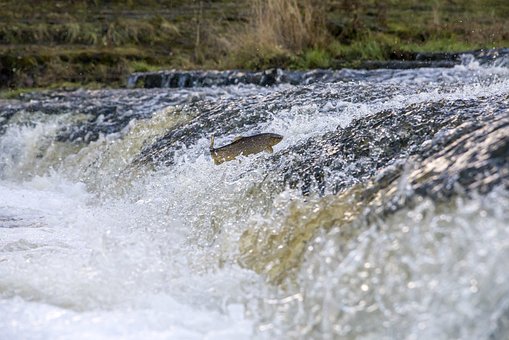
Going out there and going fishing is pretty exciting, but, like all the latest activities, getting out of your comfort zone is the best way to learn. Once you know the fundamentals of trout fishing, make sure to get some real experience as soon as you can.
Several tips to be followed as a beginner for trout fishing include the following.
1. You know what to look for.
When you reach your fishing spot, take some time to watch the trout movement below the surface of the water. If your water is especially clear, you will be able to see the fish swimming below. If not, search for a trout that rises to the surface to prey on insects.
It’s a smart idea to find a clear-water place to fish for the first time. That way, you can lower your bait in the water to see how the trout responds to it. Bear in mind, though, that the more you can see the fish, the easier they can see you.
2. Keep the bait in mind.
Most of the larger trout doesn’t bother with insects as a dietary staple, so keep in mind that the type of bait you use can affect your catch’s size. Big trout searches almost exclusively for worms, smaller fish, and maybe some large insects, while smaller trout takes whatever they can.
3. Check out the local fishing charts here.
If you’re struggling to see a lot of trout fishing success, find fishing maps in your local area, or talk to your local fish shop workers. As a beginner, you want to find the most heavily populated trout areas that offer you the best chance of catching. You should start challenging yourself with other areas down the line later.
Final Words
The Sunshine State of California is one of the most stunning western states and is underrated by most trout fishermen. Any serious angler would know not to judge a book by its cover and understand that California is home not only to some giant trout but to some of the finest trout fishing that the United States has to offer.
Now that you’re packed with all the necessary information about trout, you’re well and truly ready to begin your trip to the world of trout fishing. Be warned, though – trout fishing is an extremely addictive sport, and we can’t promise that you won’t spend many hours of your life in a river or a lake. We can think of a lot worse ways to live.

